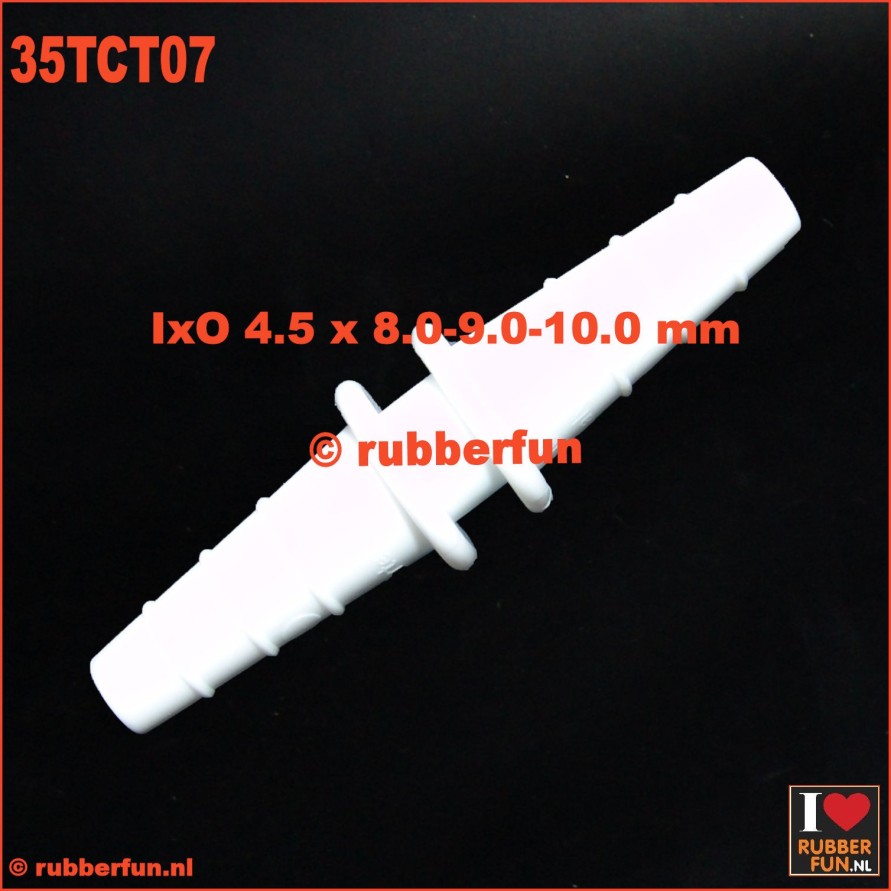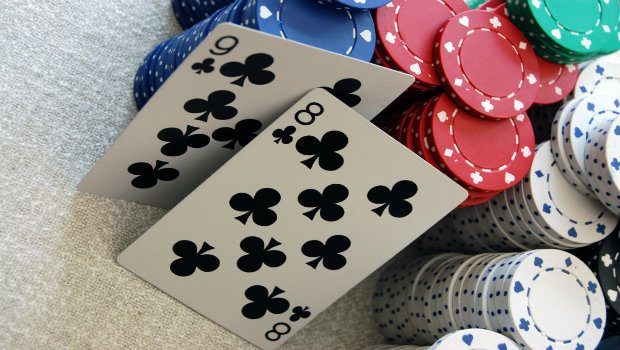Suited Connector
Most poker players realize that the biggest pots are won with flushes, straights, and sets. The reason for this is because to make a flush, straight, or set, you had to have a sneaky preflop hand like suited connectors or a small pocket pair, so your opponents have a hard time putting you on the monster hand.
Although suited connectors win the largest pots, they also can cost you a ton of money if you don't play them correctly. This page is going to teach you the proper way to play suited connectors. We take into account factors like stack size, position, and board texture to present an excellent suited connector strategy:
Bigger suited connectors again have a higher chance of flopping overcards that can then pick up equity on the turn, a winnable pair, etc. Smaller suited connectors don’t have nearly the same level of luxury. And you can use the same logic with gutshotsI’d much rather have a gutshot with two overs than a gutshot with two under cards! Suited Connector, LLC - Englewood, CO 80112 - Real Time Leads We’re in the business of bringing relevant information to consumers about things they are interested in. BBB accredited since. Mortgage Broker in Phoenix, AZ. See BBB rating, reviews, complaints, request a quote & more.
Playing Suited Connectors Preflop with a Short Stack
Position is an important consideration when you hold suited connectors. When you have a small stack and hold small suited connectors in early position, you should fold your hand. The same goes for middle position. Since you have a short stack, you need to wait for 'made preflop hands' - hands like pocket pairs or big cards like AK that can possibly win a showdown without help. You never want to get all-in preflop with small suited connectors.
Contact Information: Suited Connector, LLC Mortgage.Info 8123 South Interport Blvd. Suite A Englewood, CO 80112 You can also email us at info@suitedconnector.com.
Your suited connectors are more valuable in late position. If a few players have limped in, you should limp in as well and hope to see a cheap flop. Remember that you should play suited connectors similar to small pocket pairs - get in for cheap, and try to hit a monster flop.
Playing Suited Connectors Preflop with an Average or Large Stack
Players with average or large stacks should play suited connectors the same at a cash table. In early or middle position, you can call small raises or even make small raises yourself with small suited connectors. These sneaky plays will keep your opponents off guard, and should allow you to play the flop beautifully. Since the other players will think you have big cards, you can bet a pretty board like A-K-J and probably steal the pot. And if the board is low, you probably hit it pretty hard, so then you are in great shape too.
In late position you have much more power and are able to steal many pots with suited connectors. If the action folds to you make some 3x raises from the cut off and button with connectors in order to once again disguise your hand. If either of the blinds calls, you will still be in control and hopefully will hit some piece of the flop. Hitting part of the flop against the blinds is much stronger than hitting part of the flop against limpers.
Another play you can consider in late position is the 'squeeze'. If someone in early position made a small raise, and a few players called, you should make a substantial re-raise to push everyone out of the pot. Since no one really showed much aggression preflop, there are probably a lot of mediocre hands out there that will fold to a re-raise.
Playing Suited Connectors Postflop with a Short Stack
If you followed our preflop advice, you should only see a flop with small suited connectors if you are in late position. Check out the flop and see if you have any sort of straight or flush draws, or if you made a strong hand like trips or two pair. Since the other players have to go first, you can react to their actions:
- If an early position player bets out, and you have nothing, fold.
- If an early position player bets out, and you have a strong draw, use pot odds to decide if you should call.
- If an early position player bets out, and you have a made hand like trips or two pair, raise.
Sometimes when you have a strong draw it can be correct to put in a flop raise, simply to disguise your hand and put pressure on the other player. You may also end up buying yourself a 'free card' on the turn. Your raise will scare the other player, and he/she will probably check to you on the turn. Then, if you missed your draw, you can check behind and see the river for free.
Also, if you are extremely short stacked, you should push all-in with a draw or a made hand.
Playing Suited Connectors Postflop with an Average or Big Stack
If you raised in early or mid position preflop, you should play your suited connectors aggressively. If you are first to act, we recommend C-Betting almost any flop (regardless if you hit the flop or not), because you represented strength with your preflop raise. If you called a raise preflop, we recommend playing the hand more cautiously - if you hit something, continue with the hand, and if you missed the flop, throw your hand away.
More Specific No Limit Hold'em Strategies:
In this lesson we’re going to run through a number of heads-up match-ups that will help give you an idea of where you stand in a variety of pre-flop situations when playing hold’em. Be aware that we’re only going to focus on individual hand match-ups. When playing hold’em it’s essential that you put your opponent on a range of hands, rather than specific holdings. However, knowing the odds of common pre-flop match-ups is a good starting point. Pick out and study what will help you. While it’s not essential that these statistics be committed to memory, it won’t hurt you if you do.
Let’s start by looking at hand match-ups when holding a pair:
Pair vs. Pair
The higher pair is an 80 percent favourite. We can get very technical and highlight the fact that if the underpair didn’t have any clean suits and/or the maximum number of straight outs then the high pair’s equity would increases by one or two percent.
Pair vs. Overcards
This is the classic coin flip hand that you’ll see many times late in tournaments with one player being all-in. The term coin flip indicates an even money situation which is really a 55 to 45 percent situation, as the pair is a slight favourite.
Pair vs. Undercards
In this situation the pair is normally about a 5-to-1 favourite and can vary depending on whether the two undercards are suited and/or connectors.

Pair vs. Overcard and an undercard
The pair is about a 70 percent favourite. Another example of this holding would be J-J against A-9. The underdog non-paired hand has three outs while the favourite has redraws.
Pair vs. Overcard and one of that pair
The classic example of this situation is the confrontation between a pair of cowboys and big slick. The A-K has three outs and it becomes a 70-30 percent situation or a 2.3-to-1 dog for the cowboys. This is a far cry from the next situation where even though one of the pair is matched the other card is lower.
Pair vs. Undercard and one of that pair

The non pair has to hit its undercard twice or make a straight or flush to prevail. The pair is better than a 90 percent favourite or slightly better than 10-to-1 odds. I’ll take those odds anytime.
Pair vs. Lower suited connectors
You see this match-up late in tournaments when a player is getting desperate and pushes all-in with middle suited connectors. A hand such as Q-Q against 7-6 suited would be a prime example. The pair is a strong favourite to win.
Pair vs. Higher suited connectors
Here is the real coin flip situation. A pair of eights heads-up against a suited Q-J is a fifty-fifty proposition. The higher suited cards would have an edge against a lower pair, such as 2’s or 3’s, since the board itself can sometimes destroy little pairs.
Common Pre-Flop Match-Ups (Non Pairs)
The following heads-up confrontations contain no pairs.
Two high cards vs. Two undercards
The two higher cards are usually a 65% favourite to win, but it can vary depending on whether any of the cards are suited and/or connectors.
High card, low card vs. Two middle cards
In this match-up the high card gives it the edge. But it’s only a marginal winner, approximately 57% to the hand containing the high card.
High card, middle card vs. Second highest, low card
The edge is increased by around 5% when the low card becomes the third highest card, as shown in this example, which gives approx 62% to 38% for high card/middle card combination.
High card, same card vs. Same card, low card
In this example the A-J is in a very strong position. If we discount any flush or straight possibilities, it only leaves the player holding J-8 with three outs (the three remaining 8’s).
Same high card, high kicker vs. Same card, low kicker
The high kicker gives this hand a fairly big edge. It’s very common for A-K run into A-Q, A-J, and lower, and it’s why Ace-King is such a powerful hand, particularly at the business end of no-limit hold’em tournaments when people move all-in with any sort of Ace.
Statistical Variations
For any math maniacs reading this who do not find these odds precise enough, I acknowledge that the math is rounded and for the most part does not take into account the possibilities of ties and back door straights and flushes. What players need to be equipped with is the general statistical match-up – not the fact that in the example of a pair of eights against a suited Q-J the percents are exactly 50.61 for the eights to 48.99 for the suited connectors with the balance going to potential ties. I call that a fifty-fifty proposition.

Of greater importance than quibbling over tenths of a percent is the fact that in most heads-up confrontations you can never be a prohibitive underdog. That is one reason why poker is so challenging and fun. Of course, while true, I’m not attempting to embolden the reader to ignore the odds and become a maniac. Math is the underpinning of poker and if you regularly get your money into the middle with the worst of it you will go broke.
One statistic that hasn’t been mentioned, and it’s one that I particularly like is this – the odds of both players being dealt Aces when playing heads up (one on one) is 270,724-to-1. It’s my favourite statistic because it provides me with almost total confidence when I’m playing heads up and receive pocket Aces that I’m the boss! That confident feeling lasts right up to the river when my Aces get cracked by some rotten piece of cheese which my opponent elected to play. As mentioned already, rarely are you a prohibitive underdog – so remember that to keep those losing hands in perspective.
Related Lessons
By Tom 'TIME' Leonard
Suited Connector Jobs
Tom has been writing about poker since 1994 and has played across the USA for over 40 years, playing every game in almost every card room in Atlantic City, California and Las Vegas.